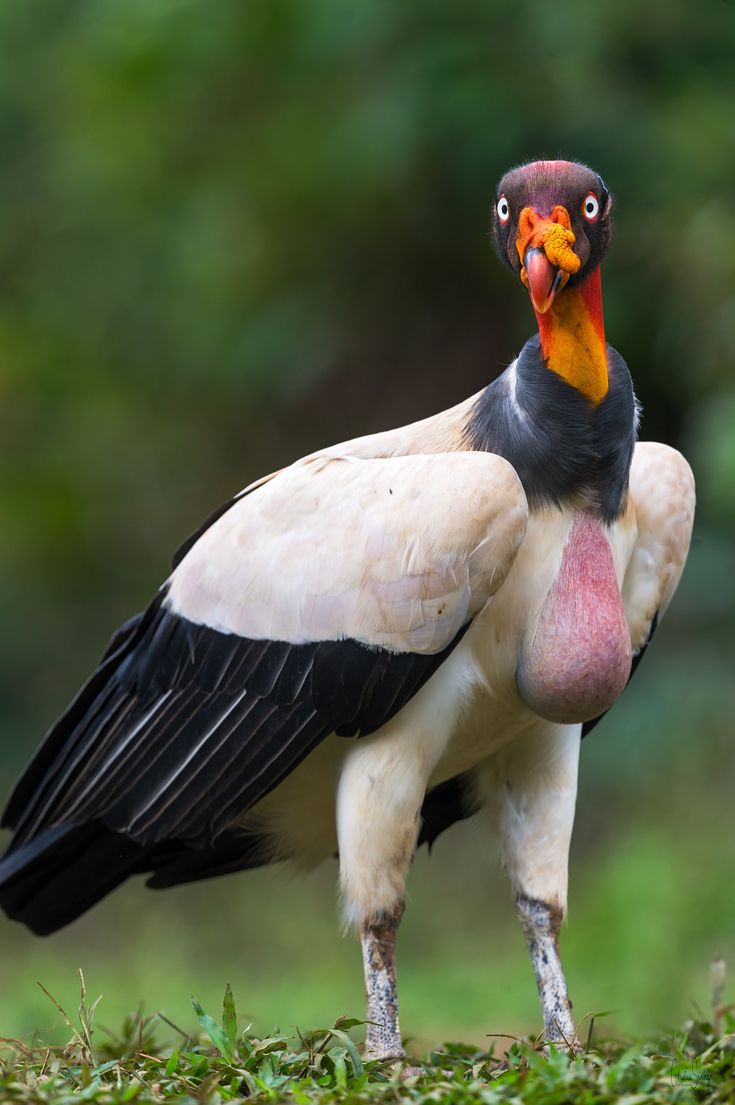This bird can be seen soaring far above the lowlands of Central and South America in search of dead prey. Their enormous wingspan and broad chest are impressive sights against the backdrop of the sky. Given their size, the name is an accurate description. They truly are king of the vultures. This article will cover some interesting facts about the size, geographical range, and diet of the king vulture.

Amazing Facts
- The fleshy orange appendage located near the beak is thought to play a role in the courtship rituals. A larger, brighter appendage may send an important signal about the health of the bird to a potential mate.
- King vultures rely on air currents for flight. They rarely flap their wings for hours at a time unless it proves to be necessary.
- King vultures were an important part of the medicine and folklore of the Mayans.
- Although they look similar to Old World vultures from the Eastern Hemisphere, it’s actually thought that New World vultures evolved independently from them.
Where to Find the King Vulture
The king vulture can be found in lowland forests, savannas, and grasslands throughout southern Mexico, Central America, and down through South America to Argentina and Brazil. They do not typically occupy large mountainous regions such as the Andes. The home territorial range of an individual bird is not known, but it is probably quite large.
King Vulture Nests
The king vultures do not build artificial nests at all. Instead, they lay their eggs in the hollow cavities of logs, stumps, and trees with very little material added.
King Vulture Scientific Name
The scientific name of the king vulture is Sarcoramphus papa. The genus combines together two ancient Greek words: sarx means flesh and rhamphos means crooked beak. This refers to the fleshy skin along the beak. The species name papa is Latin for bishop. This refers to the bird’s interesting black and white plumage. The king vulture is the only surviving member of its genus, but a few more species are known from the fossil record. They are a member of the New World vulture family.

King Vulture Size, Appearance, and Behavior
The king vulture is among the largest birds of the Americas, measuring some 2.5 feet tall and a wingspan of around 6 to 7 feet long. Their broad chest and long wings have white plumage and black tips, giving them the appearance of a bishop’s cloak. Their bare head is marked by an interesting combination of red, orange, black, and yellow with a fleshy appendage arranged around the large, hooked beak. They also have silver or white eyes and gray feet. Males and females are almost impossible to distinguish from each other by appearance alone.

King vultures are mostly solitary hunters that stick to small family units and do not form large groups. Although they lack a voice box, they do make low croaking sounds and warning calls, especially when a predator approaches their territory. They spend much of the day sitting atop the canopy or soaring above the ground in search of food. They tend to remain within the same place for almost the entire year and do not migrate at all.

King Vulture Diet
King vultures are considered to be scavengers. Without a good sense of smell, they mostly use their well-developed vision to find dead carcasses and feed on them. However, they will often rely on other types of vultures to locate food for them.
What does the king vulture eat?
King vultures feed almost exclusively on carrion. They do not hunt for and kill other animals, even when it’s sick and dying. Their large, sharp beak is nevertheless capable of ripping through tough hide and flesh when the animal has expired. Smaller vultures rely on them to tear up the food.
King Vulture Predators, Threats, and Conservation Status
The king vulture does not appear to be seriously threatened in any manner. The IUCN Red List currently ranks it as a species of least concern. However, habitat loss may have some negative impact on this species, causing populations to decline.
What eats the king vulture?
King vultures are sometimes preyed upon by snakes and big cats such as jaguars. The size of the adult affords it some protection against all but the largest predators. Juveniles are more vulnerable, especially when they wander away from the nesting site.


